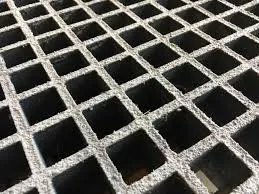
-
 Afrikaans
Afrikaans -
 Albanian
Albanian -
 Amharic
Amharic -
 Arabic
Arabic -
 Armenian
Armenian -
 Azerbaijani
Azerbaijani -
 Basque
Basque -
 Belarusian
Belarusian -
 Bengali
Bengali -
 Bosnian
Bosnian -
 Bulgarian
Bulgarian -
 Catalan
Catalan -
 Cebuano
Cebuano -
 China
China -
 China (Taiwan)
China (Taiwan) -
 Corsican
Corsican -
 Croatian
Croatian -
 Czech
Czech -
 Danish
Danish -
 Dutch
Dutch -
 English
English -
 Esperanto
Esperanto -
 Estonian
Estonian -
 Finnish
Finnish -
 French
French -
 Frisian
Frisian -
 Galician
Galician -
 Georgian
Georgian -
 German
German -
 Greek
Greek -
 Gujarati
Gujarati -
 Haitian Creole
Haitian Creole -
 hausa
hausa -
 hawaiian
hawaiian -
 Hebrew
Hebrew -
 Hindi
Hindi -
 Miao
Miao -
 Hungarian
Hungarian -
 Icelandic
Icelandic -
 igbo
igbo -
 Indonesian
Indonesian -
 irish
irish -
 Italian
Italian -
 Japanese
Japanese -
 Javanese
Javanese -
 Kannada
Kannada -
 kazakh
kazakh -
 Khmer
Khmer -
 Rwandese
Rwandese -
 Korean
Korean -
 Kurdish
Kurdish -
 Kyrgyz
Kyrgyz -
 Lao
Lao -
 Latin
Latin -
 Latvian
Latvian -
 Lithuanian
Lithuanian -
 Luxembourgish
Luxembourgish -
 Macedonian
Macedonian -
 Malgashi
Malgashi -
 Malay
Malay -
 Malayalam
Malayalam -
 Maltese
Maltese -
 Maori
Maori -
 Marathi
Marathi -
 Mongolian
Mongolian -
 Myanmar
Myanmar -
 Nepali
Nepali -
 Norwegian
Norwegian -
 Norwegian
Norwegian -
 Occitan
Occitan -
 Pashto
Pashto -
 Persian
Persian -
 Polish
Polish -
 Portuguese
Portuguese -
 Punjabi
Punjabi -
 Romanian
Romanian -
 Russian
Russian -
 Samoan
Samoan -
 Scottish Gaelic
Scottish Gaelic -
 Serbian
Serbian -
 Sesotho
Sesotho -
 Shona
Shona -
 Sindhi
Sindhi -
 Sinhala
Sinhala -
 Slovak
Slovak -
 Slovenian
Slovenian -
 Somali
Somali -
 Spanish
Spanish -
 Sundanese
Sundanese -
 Swahili
Swahili -
 Swedish
Swedish -
 Tagalog
Tagalog -
 Tajik
Tajik -
 Tamil
Tamil -
 Tatar
Tatar -
 Telugu
Telugu -
 Thai
Thai -
 Turkish
Turkish -
 Turkmen
Turkmen -
 Ukrainian
Ukrainian -
 Urdu
Urdu -
 Uighur
Uighur -
 Uzbek
Uzbek -
 Vietnamese
Vietnamese -
 Welsh
Welsh -
 Bantu
Bantu -
 Yiddish
Yiddish -
 Yoruba
Yoruba -
 Zulu
Zulu
frp fuel tank
Understanding FRP Fuel Tanks A Modern Solution for Fuel Storage
In the world of fuel storage and transportation, the materials used play a crucial role in ensuring safety, durability, and efficiency. One increasingly popular solution is the use of Fiber Reinforced Polymer (FRP) fuel tanks. These tanks are revolutionizing the way businesses and industries manage their fuel storage needs, providing numerous benefits over traditional materials such as steel and concrete.
What is FRP?
Fiber Reinforced Polymer is a composite material made by combining a polymer matrix with fibers, typically glass or carbon. This combination results in a lightweight, strong, and corrosion-resistant material that can withstand harsh environmental conditions. The versatility of FRP allows it to be molded into various shapes and sizes, making it an ideal choice for fuel tanks.
Advantages of FRP Fuel Tanks
1. Corrosion Resistance One of the primary advantages of FRP tanks is their resistance to corrosion. Unlike steel tanks, which can rust and degrade over time, FRP tanks are impervious to most chemicals, ensuring that the integrity of the fuel remains intact and that no contaminants are introduced into the fuel supply.
2. Lightweight FRP fuel tanks are significantly lighter than their steel counterparts. This lightweight nature makes them easier to transport and install, reducing labor costs and time. Additionally, lighter tanks can lead to lower overall shipping costs and may also reduce the structural support requirements for the installation site.
3. Durability FRP tanks are designed to withstand extreme weather conditions, including UV exposure, extreme temperatures, and harsh chemicals. Their durability extends the lifespan of the tank, reducing the need for frequent replacements and the associated costs.
frp fuel tank

4. Customizability Manufacturers can design FRP tanks to meet specific requirements, including size, shape, and performance standards. This adaptability makes them suitable for a variety of applications, from small-scale operations to large industrial facilities.
5. Safety FRP tanks typically have superior impact resistance compared to traditional materials. This characteristic is essential in minimizing the risk of leaks and spills, thereby enhancing safety for both the environment and the personnel handling the fuel.
6. Environmental Impact Many FRP tanks can be recycled at the end of their lifespan, contributing to reduced environmental impact. With the growing emphasis on sustainability, this aspect becomes increasingly important for businesses looking to improve their ecological footprint.
Applications of FRP Fuel Tanks
FRP fuel tanks are utilized in various industries, including automotive, aviation, marine, and industrial manufacturing. They are commonly used for storing gasoline, diesel, and other fuels, as well as various chemicals. Their corrosion resistance and lightweight nature make them particularly attractive for use in remote locations or areas where traditional tanks would be challenging to install.
Conclusion
As industries continue to seek solutions that offer safety, efficiency, and cost-effectiveness, FRP fuel tanks present a compelling option. Their unique properties, including corrosion resistance, lightweight design, durability, and environmental benefits, make them an ideal choice for businesses looking to modernize their fuel storage strategies.
In conclusion, the evolving landscape of fuel storage demands innovative materials like FRP. As the advantages of FRP fuel tanks become more widely recognized, it is anticipated that their adoption will grow, paving the way for safer and more efficient fuel management solutions across various sectors. Ultimately, investing in FRP technology is not just about modernizing systems, but also about fostering a more sustainable future.
Latest news
-
Exploring the Benefits of Top Hammer Drifter Rods for Enhanced Drilling PerformanceNewsJun.10,2025
-
High-Precision Fiberglass Winding Machine for GRP/FRP Pipe Production – Reliable & Efficient SolutionsNewsJun.10,2025
-
FRP Pipes & Fittings for Shipbuilding - Corrosion-Resistant & LightweightNewsJun.09,2025
-
Premium FRP Flooring Solutions Durable & Slip-ResistantNewsJun.09,2025
-
Premium Fiberglass Rectangular Tanks Durable & Lightweight SolutionNewsJun.09,2025
-
Tapered Drill String Design Guide Durable Performance & UsesNewsJun.09,2025









